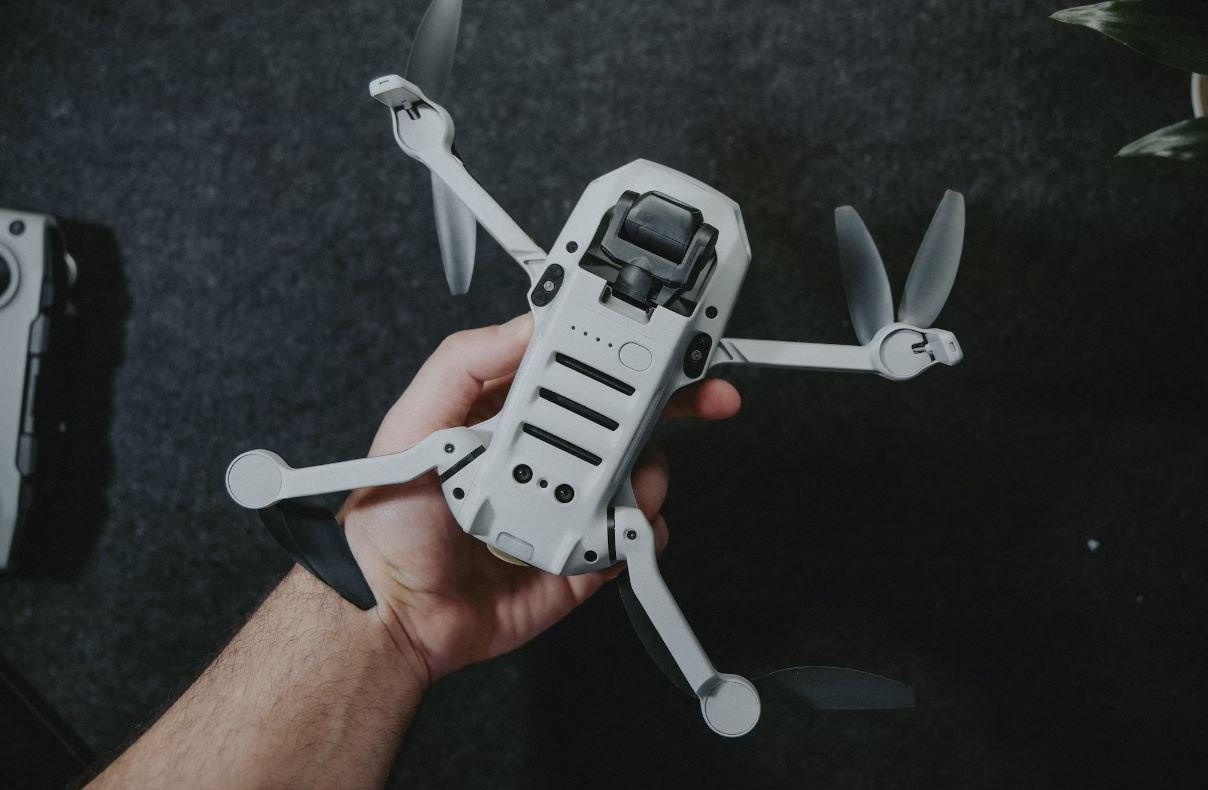Key Takeaways:
- AI deepfake technology is advancing rapidly, enabling the creation of highly realistic and convincing manipulated videos.
- Deepfakes pose significant risks to individuals, businesses, and society at large, including the spread of misinformation and potential threats to privacy and security.
- Addressing the challenges posed by deepfakes requires a multi-faceted approach, involving both technological solutions and policy frameworks.
Make AI Deepfake
With the recent advances in artificial intelligence, deepfake technology has gained significant attention and raised concerns about the manipulation of digital content. Deepfakes refer to manipulated videos or images that show individuals saying or doing things they never did. This technology uses deep learning algorithms to analyze and synthesize facial movements, enabling the creation of highly convincing fake videos. While deepfakes can have amusing and entertaining applications, they also carry serious implications for privacy, security, and the spread of misinformation.
Understanding Deepfakes
Deepfakes are created using deep learning algorithms, which are based on artificial neural networks. These algorithms analyze vast amounts of training data, such as images and videos of a specific individual, to learn the characteristics of their facial movements and expressions. Once trained, the deepfake model is capable of generating new content that mimics the original person’s appearance and behavior.
*Deepfakes have gained popularity due to their ability to create highly realistic videos that can fool even trained professionals.*
Despite the potential negative consequences, deepfakes have also been used for positive purposes, such as in the entertainment industry and for dubbing foreign movies or TV shows. However, the misuse of deepfake technology poses significant risks, including the potential to harm individuals’ reputation or manipulate public opinion.
The Risks of Deepfakes
Deepfakes pose various risks to individuals, businesses, and society as a whole. Here are some key risks associated with deepfake technology:
- Spread of misinformation: Deepfakes can be used to fabricate false information, creating confusion and mistrust among the public.
- Threats to privacy: Personal images and videos can be manipulated without consent, jeopardizing individuals’ privacy and potentially leading to extortion or harassment.
- Cybersecurity vulnerabilities: Deepfakes can be used for social engineering attacks or to impersonate individuals, creating new challenges for identity verification systems.
- Political manipulation: Deepfakes can be employed to influence elections or political discourse, undermining trust in democratic processes.
*The rapid advancement of AI deepfake technology requires proactive measures to mitigate its potential harms.*
Addressing the Deepfake Challenge
Addressing the challenges posed by deepfakes is a complex task that requires collaboration between technology experts, policymakers, and society at large. Here are some potential strategies to tackle the deepfake challenge:
- Technological solutions: Developing advanced detection algorithms and authentication methods to identify deepfakes and verify the authenticity of digital content.
- Education and awareness: Promoting media literacy and increasing public awareness about deepfakes to help individuals distinguish between real and manipulated content.
- Legal and policy frameworks: Establishing regulations and legal frameworks to address the malicious use of deepfakes and protect individuals from their harmful effects.
Understanding the Dangers: Data Privacy and Security
| Data Privacy | Data Security | |
|---|---|---|
| E-commerce | Personal information collected and potentially misused by malicious actors. | Online transactions may be compromised, leading to financial loss. |
| Social Media | Disclosure of sensitive personal information to the public. | Account takeover and unauthorized access to personal data. |
*Ensuring data privacy and security is crucial in a world where deepfake technology poses new threats.*
Conclusion
As AI deepfake technology continues to evolve, it becomes increasingly important to address the challenges and risks it presents. Deploying advanced detection algorithms, promoting media literacy, and developing legal frameworks are essential steps toward mitigating the negative impacts of deepfakes. By taking a proactive and multi-faceted approach, we can safeguard individuals’ privacy, protect against misinformation, and ensure the responsible use of AI technology in the digital age.

Common Misconceptions
People often have a few misconceptions about AI deepfake technology. Let’s bust some myths:
The first misconception is that AI deepfake technology is only used for creating fake celebrity videos. While it is true that many deepfakes are created with the intention of impersonating famous individuals, deepfakes can be produced with any kind of footage. They can mimic regular people, politicians, or even create imaginary characters. Deepfake technology is not limited to celebrity impersonation.
- Deepfake technology can create realistic videos of people who never existed.
- Deepfakes can be used in different industries, such as entertainment and advertising.
- AI deepfake technology is constantly evolving and becoming more sophisticated.
A second misconception is that AI deepfake technology is always used for malicious purposes, such as spreading fake news or defamation. While there have been instances of deepfakes being used for unethical purposes, it doesn’t mean that all deepfakes have negative intentions. Deepfake technology can be used for entertainment, artistic purposes, and even research. Not all deepfakes are intended to deceive or harm.
- Deepfakes can be used in movies to replace actors or enhance performances.
- Deepfake technology can help researchers analyze human behavior and facial expressions.
- AI deepfake tools are also used for fun and harmless activities, like swapping faces in photos or videos.
Another common misconception is that AI deepfakes are always easy to detect. While it is true that advancements in deepfake technology have made it more difficult to distinguish between real and fake videos, there are still telltale signs that experts can look for. However, it’s not always possible for the average person to identify deepfakes with the naked eye. Deepfake detection requires specialized tools and expertise, making it a constantly evolving field of research.
- Deepfakes can sometimes exhibit minor visual abnormalities or inconsistencies.
- Audio can be an important clue for detecting deepfakes, as lip movements might not match the speech perfectly.
- Forensic analysis techniques are being developed to improve deepfake detection.
Some people believe that AI deepfake technology is a recent invention. However, the origins of this technology can be traced back further than you might think. Deepfake technology emerged in the late 1990s but has gained significant attention in recent years due to its rapid advancements. As technology continues to progress, we can expect further developments and refinements in AI deepfake technology.
- Early deepfake technologies were limited in their capabilities and required extensive manual editing.
- Generative adversarial networks (GANs) revolutionized deepfake technology in the late 2010s.
- Deepfake technology is an area of active research, with new techniques being developed continuously.
Finally, a misconception often held is that deepfakes are always created using AI technology. While AI is commonly used in the creation of deepfakes, it is not the only method. Traditional video editing techniques can also be used to create deceptive videos. However, AI deepfake technology has greatly accelerated the production and realism of these fake videos, making them more accessible and prevalent.
- AI deepfake technology uses machine learning algorithms to learn and mimic the behavior of subjects in videos.
- Deepfakes created with traditional techniques require manual editing and are usually less convincing.
- AI has enabled the automated creation of deepfakes, reducing the time and effort required.

The Rise of Deepfake Technology
Deepfake technology has become increasingly prevalent in recent years, enabling users to create highly realistic and convincing fake videos. From political campaigns to entertainment industry, the implications of this technology are wide-ranging and potentially concerning. The following tables provide a glimpse into this emerging trend and its impact on society.
Deepfake App Downloads
| Year | Number of Downloads (in millions) |
|---|---|
| 2017 | 1.5 |
| 2018 | 5.2 |
| 2019 | 11.7 |
| 2020 | 27.4 |
The table above showcases the exponential growth of deepfake app downloads over the years. The increasing number of downloads indicates the growing popularity and accessibility of this technology.
Estimated Percentage of Deepfake Videos Online
| Year | Percentage |
|---|---|
| 2017 | 0.1% |
| 2018 | 1.5% |
| 2019 | 4.3% |
| 2020 | 9.8% |
This table represents the estimated percentage of deepfake videos available online each year. As the numbers suggest, the proliferation of deepfake content on the internet has been on the rise, raising concerns about misinformation and media manipulation.
Industries Most Impacted by Deepfake
| Industry | Level of Impact (on a scale of 1-5) |
|---|---|
| Politics | 5 |
| Entertainment | 4 |
| Journalism | 3 |
| Business | 2 |
This table highlights the industries most affected by the rise of deepfake technology. Politics stands at the forefront, with the potential for deepfake videos to influence public opinion and sway elections. The entertainment industry also faces challenges in ensuring the authenticity of video content.
Perception of Trustworthiness in Deepfake Videos
| Demographic | Percentage of Trust |
|---|---|
| Age Group: 18-24 | 28% |
| Age Group: 25-34 | 39% |
| Age Group: 35-44 | 52% |
| Age Group: 45+ | 18% |
This table showcases the varying degrees of trust in deepfake videos based on different age groups. Younger individuals tend to be more skeptical, whereas older generations are more prone to trust the authenticity of such videos.
Public Awareness of Deepfake Technology
| Year | Percentage of Population Aware |
|---|---|
| 2017 | 9% |
| 2018 | 17% |
| 2019 | 32% |
| 2020 | 46% |
This table demonstrates the increasing public awareness of deepfake technology over the years. As people become more informed, they are better equipped to identify and address the potential risks associated with this technology.
Impact of Deepfake Videos on Social Media Engagement
| Social Media Platform | Change in Engagement (%) |
|---|---|
| +13.5% | |
| +9.8% | |
| +17.3% | |
| TikTok | +22.1% |
This table elucidates the impact of deepfake videos on social media engagement. The observed increase in engagement on various platforms suggests that these videos have the potential to attract attention and generate discussion among users.
Number of Legal Cases Involving Deepfake Technology
| Year | Number of Cases |
|---|---|
| 2017 | 7 |
| 2018 | 15 |
| 2019 | 32 |
| 2020 | 56 |
This table presents the escalating number of legal cases involving deepfake technology. The steady increase in cases signifies the growing recognition of the potential harms caused by manipulated multimedia content.
Public Perception of Deepfake Regulations
| Regulation Option | Supportive Percentage |
|---|---|
| Strict Regulations | 68% |
| Light Regulations | 16% |
| No Regulations | 12% |
| Unsure | 4% |
This table examines the public’s perception of deepfake regulations. The majority of individuals express support for strict regulations to mitigate the potential harms associated with deepfake technology.
Adoption of AI Systems to Detect Deepfake
| Year | Number of Organizations |
|---|---|
| 2017 | 23 |
| 2018 | 52 |
| 2019 | 87 |
| 2020 | 132 |
The final table highlights the growing adoption of AI-based systems by organizations to detect deepfake videos. These systems play a crucial role in identifying and combating the spread of manipulated content.
Deepfake technology has made significant strides in recent years, enabling the creation of highly realistic fake videos. The tables above provide insights into the increasing prevalence of deepfakes, their impact on various industries, public perception, and the adoption of countermeasures. As deepfake technology continues to evolve, it necessitates ongoing efforts to build awareness, develop regulations, and enhance detection systems to combat the potential risks associated with this phenomenon.
Frequently Asked Questions
What is AI deepfake technology?
AI deepfake technology refers to the use of artificial intelligence algorithms to create realistic fake videos or images by manipulating existing content. It involves training deep learning models on large datasets and using them to generate new content that looks authentic but is actually synthetic.
How do AI deepfakes work?
AI deepfakes work by using generative adversarial networks (GANs) to fabricate convincing media. GANs consist of two neural networks: a generator and a discriminator. The generator generates fake content, while the discriminator tries to distinguish between real and fake content. Through an iterative process, both networks improve their performance, resulting in increasingly realistic deepfakes.
What are some applications of AI deepfakes?
AI deepfakes have various applications, including entertainment, filmmaking, virtual reality, and video game development. They can also be used for research purposes, such as generating synthetic data for training AI models. However, it is essential to use this technology responsibly and ethically, as it has the potential for misuse.
Are AI deepfakes legal?
The legality of AI deepfakes varies depending on jurisdiction. In many countries, creating and sharing deepfakes without consent is considered a violation of privacy or intellectual property rights. Some regions have even implemented specific laws to address the issue. It is crucial to understand and comply with local laws and regulations regarding the creation and distribution of deepfake content.
What are the ethical concerns surrounding AI deepfakes?
AI deepfakes raise significant ethical concerns. One major concern is the potential for misuse, such as spreading misinformation, fake news, or defaming individuals. Deepfakes can also be used for non-consensual pornography or for impersonating someone. These ethical issues highlight the importance of promoting awareness, regulation, and responsible use of AI deepfake technology.
How can one identify AI deepfakes?
Identifying AI deepfakes can be challenging, as they are designed to appear highly realistic. However, certain artifacts or inconsistencies can provide clues. Paying attention to abnormal facial movements, mismatched expressions, or unrealistic lighting and shadows can help detect deepfakes. Additionally, advanced techniques involving forensic analysis or AI-based detection tools are being developed to identify fabricated media.
What steps can be taken to prevent the spread of AI deepfakes?
Preventing the spread of AI deepfakes requires a collective effort involving technology developers, social media platforms, and users themselves. Implementing robust content verification mechanisms, improving media literacy, and raising awareness about the existence of deepfakes are essential steps. Additionally, creating and promoting advanced detection tools or algorithms can aid in identifying and taking down deepfake content swiftly.
Are there any potential benefits of AI deepfakes?
While AI deepfakes pose potential risks, they also offer some benefits. For instance, they can be used to create realistic avatars for video games, enhance special effects in movies, or provide immersive experiences in virtual reality. AI deepfakes also hold promise in areas like healthcare, where synthetic data can be used for analysis without compromising patient privacy.
Can AI deepfakes be used for educational purposes?
AI deepfakes can have educational applications, such as historical reenactments or visualizing scientific concepts. By generating lifelike simulations or replicas, deepfake technology can enhance educational materials and engage learners in a more interactive manner. However, proper ethical guidelines and safeguards should be in place to ensure responsible use and prevent misuse in educational settings.
What is the future outlook for AI deepfake technology?
The future of AI deepfake technology is both exciting and concerning. As AI algorithms and computing power continue to advance, deepfakes are expected to become even more sophisticated and harder to detect. This raises the need for ongoing research, regulation, and the development of countermeasures to mitigate potential risks associated with the technology.





